Samsung LN-T4671F LCD TV Measurements
Settings
Keep in mind that unit-to-unit variations, viewing environment, source, and screen (in the case of front projectors) might render the settings I used less than optimum on some samples of this display. If you try these settings, I strongly recommend that you do so as a starting point, following up with one of the several display-setup DVDs on the market to make certain that the basic picture settings are correct for your situation. Confirmation of the grayscale settings requires a full professional calibration.
Picture Menu
Mode Movie
Contrast 98
Brightness 48
Sharpness 20
Color 48
Tint G52/R48
Backlight 2
Color Tone Warm2
Size Just Scan
Digital NR Low
Auto Motion Plus Off
Detailed Settings
Black Adjust Off
Dynamic Contrast Off
Gamma 3
Color Space Auto
My Color Control All 15 (centered)
White Balance
R Offset 12
G Offset 10
B Offset 12
R Gain 21
G Gain 18
B Gain 9
Edge Enhancement Off
xvYCC Off
Contrast & Resolution
Peak white level
Full screen 38.8fL
100 IRE window 39.2fL
Black level 0.019fL
Peak contrast ratio 2063:1
Overscan (Size = Just Scale)
480i/p 3.5%
720p 1.5%
1080i/p 0%
Horizontal bandwidth at 1080i
HDMI/DVI 37MHz
Component 37MHz
The high-frequency burst looked softer via component than HDMI.
Grayscale & Color Tracking
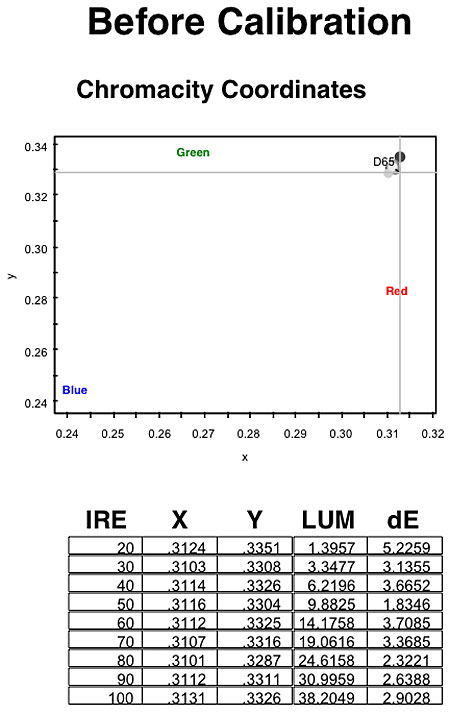
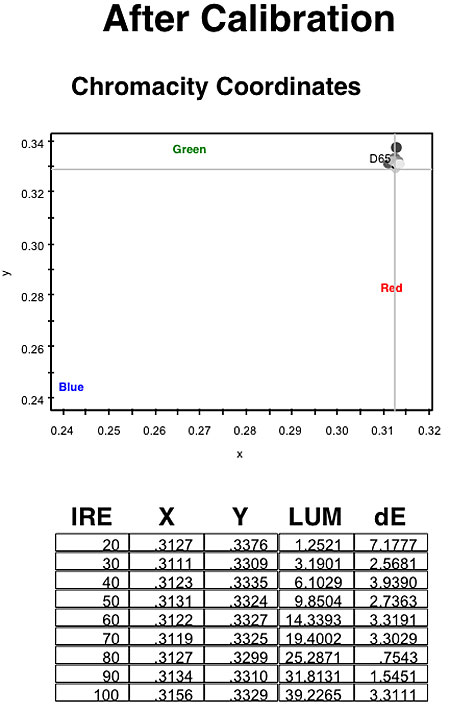
As you can see above, the LN-T4671's Movie mode and Warm2 color-temp preset produced grayscale measurements quite close to D65. Calibration of the grayscale controls in the user menu brought it slightly closer, but it's not really necessary in my view.
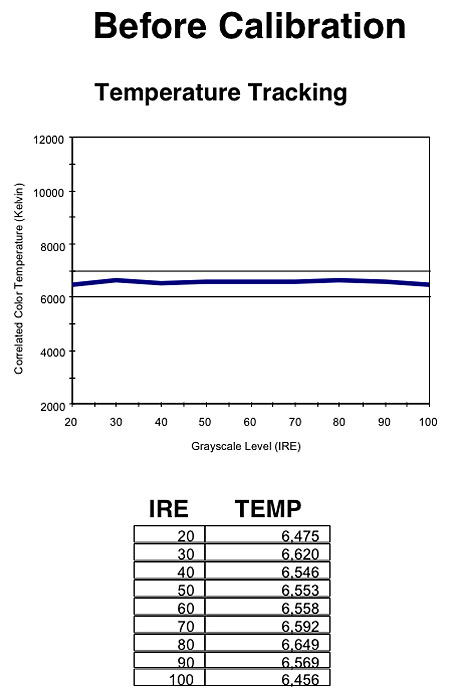
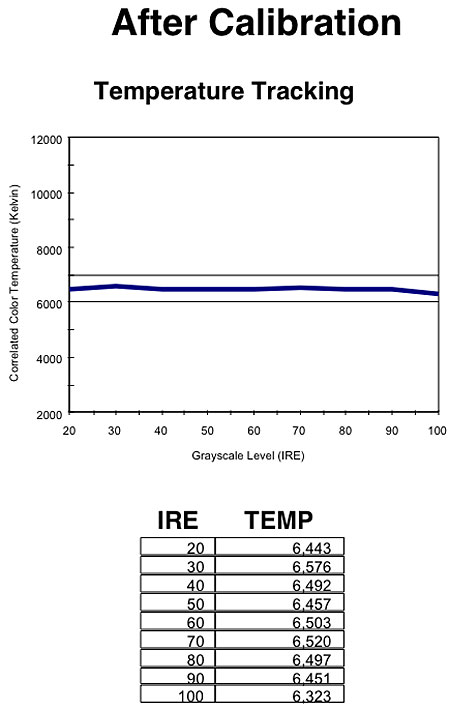
Color-temperature tracking wasn't improved significantly with a full calibration.
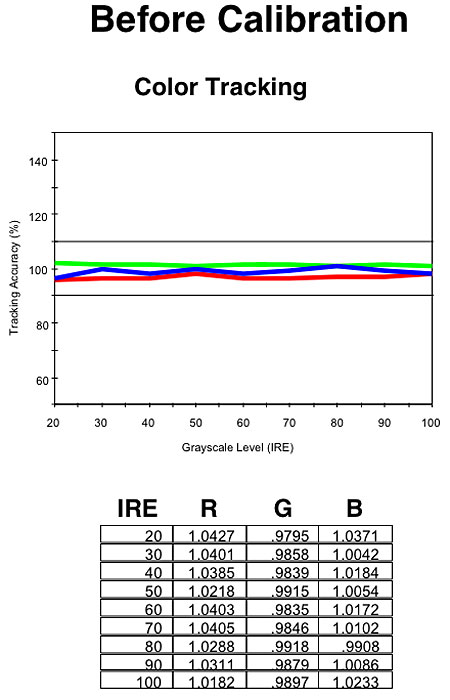
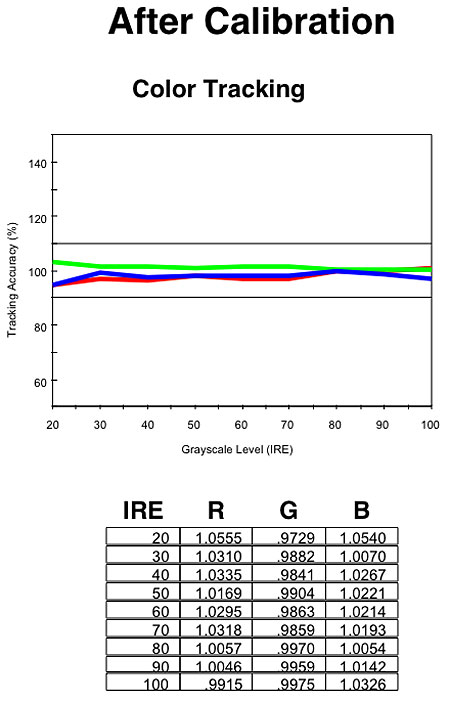
Again, color tracking was pretty good before calibration, and only slightly better after calibration.
Color Accuracy
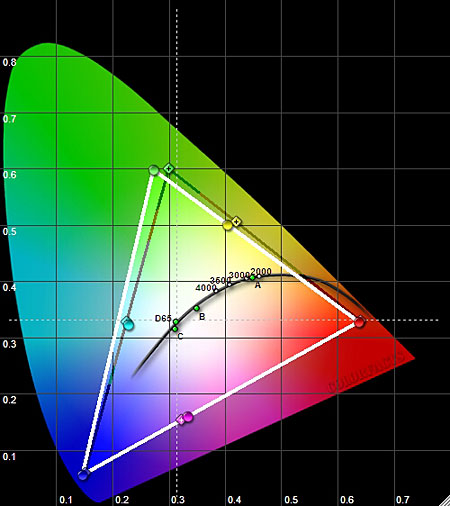
Setting the Color Space control to Auto got the set's color primaries and secondaries (white triangle) relatively close to their targets (dark triangle). Green was slightly off (though not in a direction that most would notice), yellow was a bit undersaturated, and magenta was ever-so-slightly toward red.
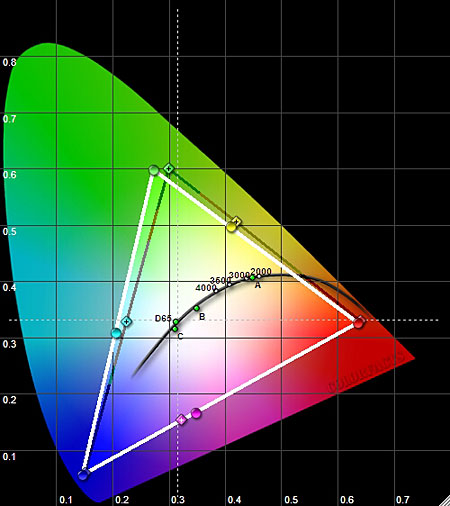
Oddly, setting the Color Space control to Wide produced a color palette not much different from Auto. The primaries were essentially identical, while the secondaries were all a bit farther off, so I stuck with Auto.
- Log in or register to post comments



































































